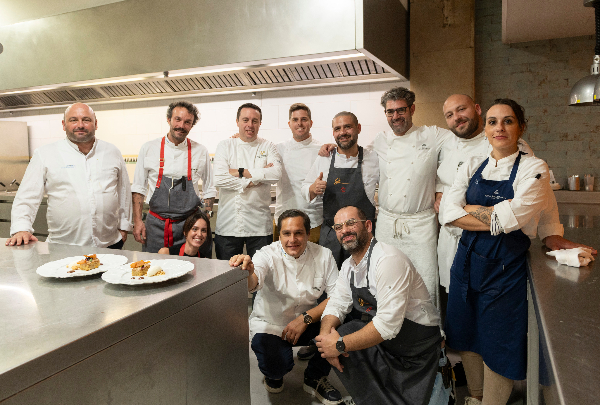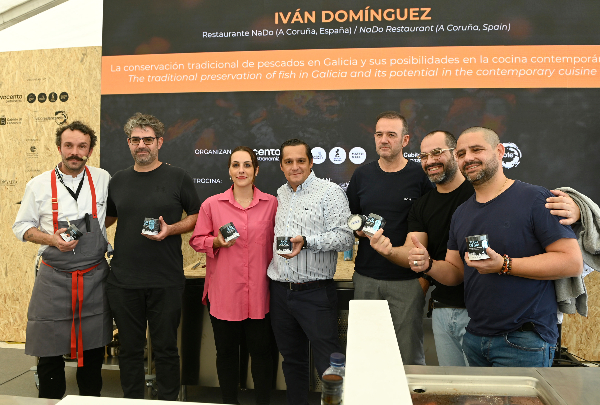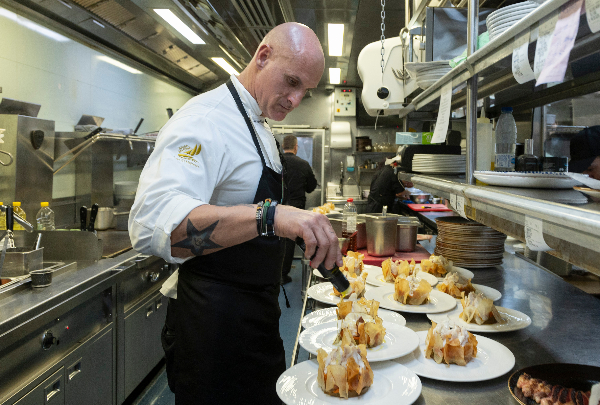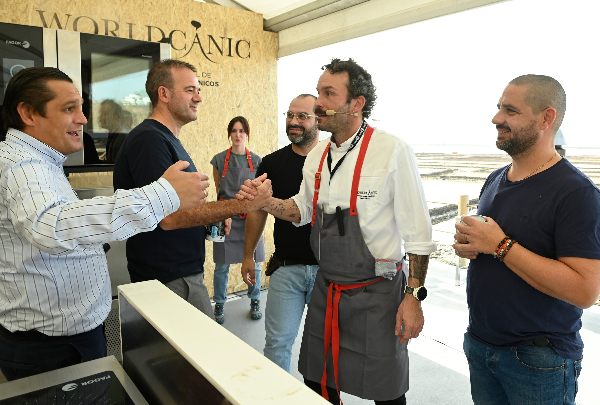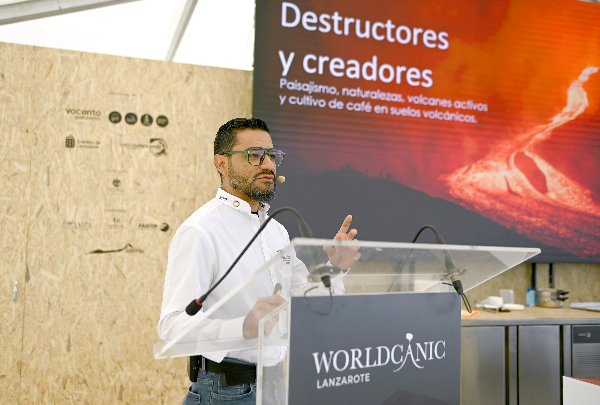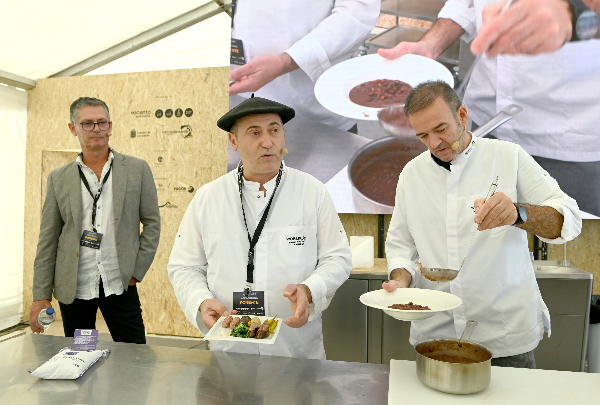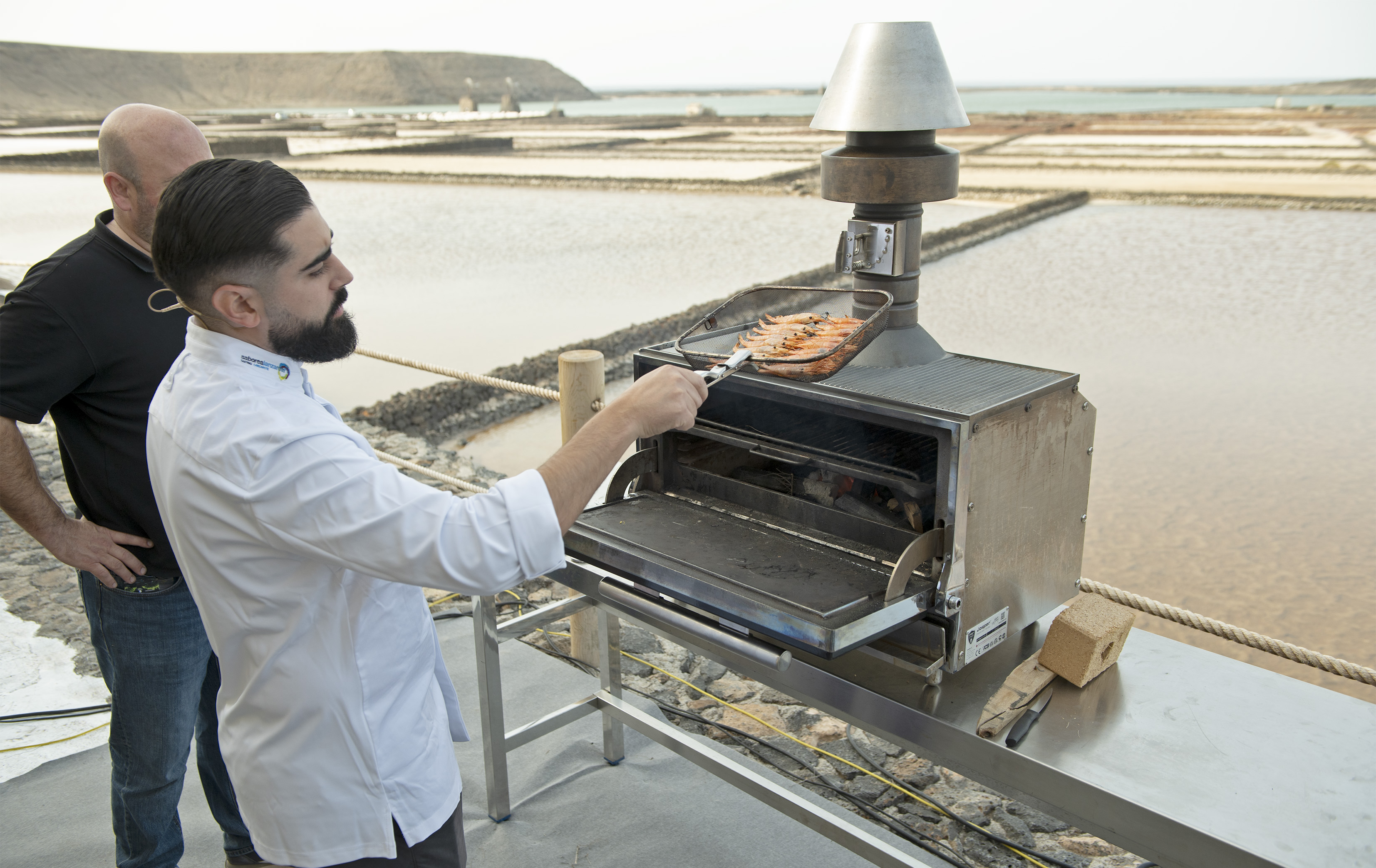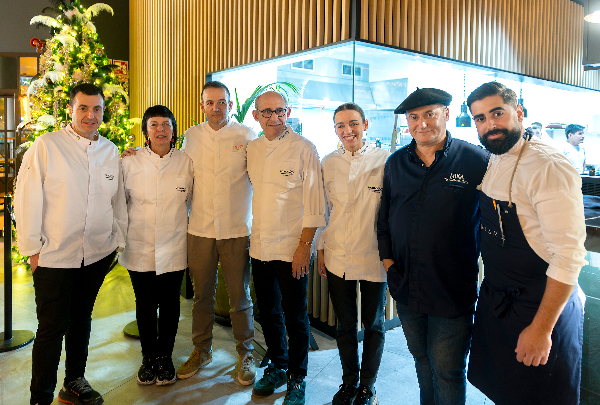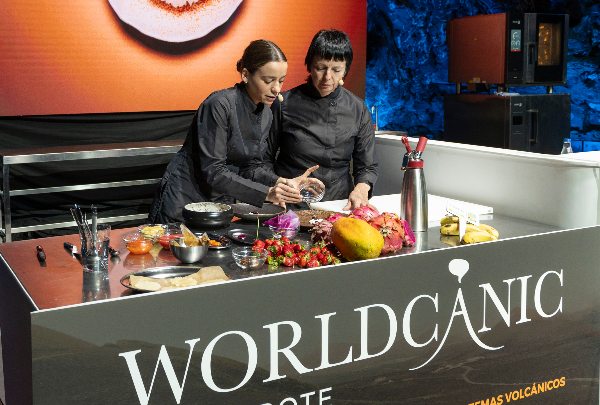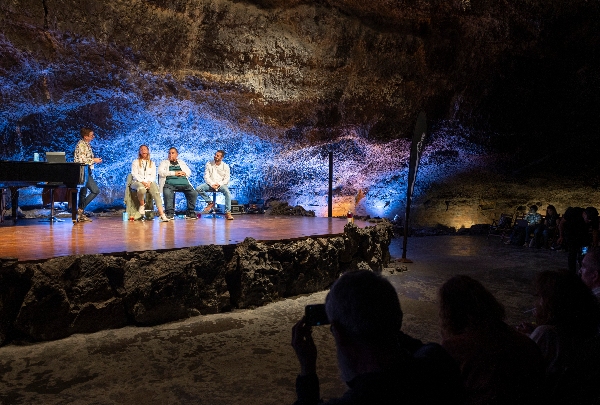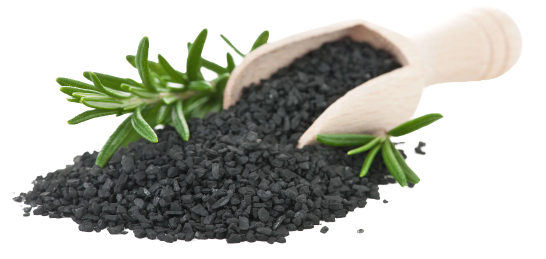News
And Camarena fell in love with La Santa's carabinero
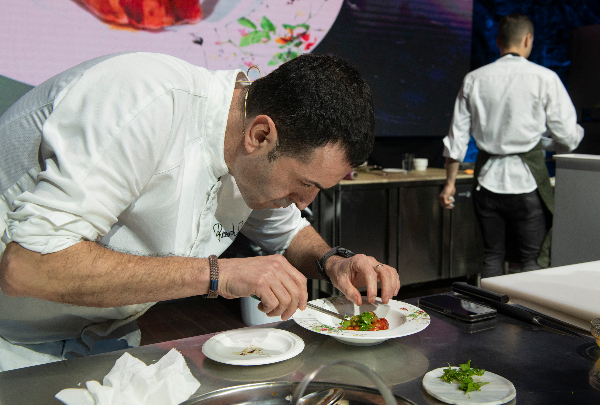
The Valencian chef has captured his recent love affair with the size and flavour of the local crustacean, whose fame continues to grow, in unpublished dishes.
The galactic Ricard Camarena has arrived at Worldcanic with the humility that characterises him, recognising a true idyll with Lanzarote and its larder, much of it discovered at the Ecofinca that Toño Morales runs with passion and mastery in Tinajo. "I've even discovered unusual products that don't make it into the shops, offering nuances from another planet, such as the pitaya flower or your halophyte plants," he says. In La Santa, he was captivated by the prawn and the carabinero, with which he treated the audience to an interesting cooking show, which, according to him, was "a Lanzarote-focused presentation".
He began with a raw prawn from La Santa, "like the one that Juan el Majorero served for dinner last night, worthy of a Michelin star". He has created a counterpoint of flavours with it, accompanying it on the plate with an unsweetened coconut milk whipped with lemon juice and salt, and a puree of roasted and fried cauliflower, together with cubes of green apple with aged vinegar of herbs and flowers. "It's true that less is more, but often a good combination achieves that less," he explained, as he went on to plate some curdled salmon roe yolks, similar in flavour to a caviar cream, along with coffee oil balls made with toasted sunflower seed oil. "The product expresses itself, but when it is 'played' coherently, it can express more. In this dish, every spoonful is different, and in each one some flavours stand out, always at the service of the others".
His Majesty the Carabinero of La Santa
But the highlight of the demonstration was undoubtedly "his majesty the carabinero", for which he admitted to being absolutely fascinated. "The ones that come to Valencia usually come from Huelva or Morocco, so they're not as fresh and they're usually too yellow, so I don't use them very often. Until it gets here," he admits. He has created a sophisticated dish using all the parts of the giant animal, including the brains, which he has interpreted in the typical Roman way, "with egg and egg whites instead of flour".
With the legs and carapace poached in olive oil and toasted butter, he extracted an intense oil with which he painted the tail of the carabino before frying it and placing it on the plate next to a shallow frying of tebete leaves, a local herb that is perfect for fried brains. But the key to the dish was a prawn garum, "made with fermented bread dough and the white parts of the head, which we put in jars", and a consommé made with the hard parts of the head, macerated for 24 hours with old chamomile, herbs and lemon juice, and cooked just three minutes before serving to preserve all the flavour. "Because flavour is aroma, and what remains in the air does not reach the palate," he concluded, before calling Toño on stage to judge the dish.

